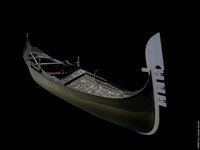Trauerschmuck aus dem 1. Weltkrieg
Freundschaftszeichen in Originaletui. Es wurde einer Sechszehnjährigen als Überraschung zum Tanzstundenabschlussball von einem Angestellten geschenkt. Es wurde später an einer Kette um den Hals getragen.
Das Originaletui ist klein, weinrot, länglich und innen mit hellem Stoff ausgekleidet. Auf der Innenseite des Deckels goldfarbene Schrift: Emil Lüdke G.m.b.H. Jena. Das Freundschaftszeichen selbst besteht aus einem doppelten blau-hell-blau gestreiften Band, das an Ober- und Unterseite von Metall gefasst ist. In der Mitte aus Metall ein kleines Wappenschild mit Wappenzier. Auf der Gegenseite Metallstreifen mit Gravur: Martin s.l. Thea. Whn. 27.
en

